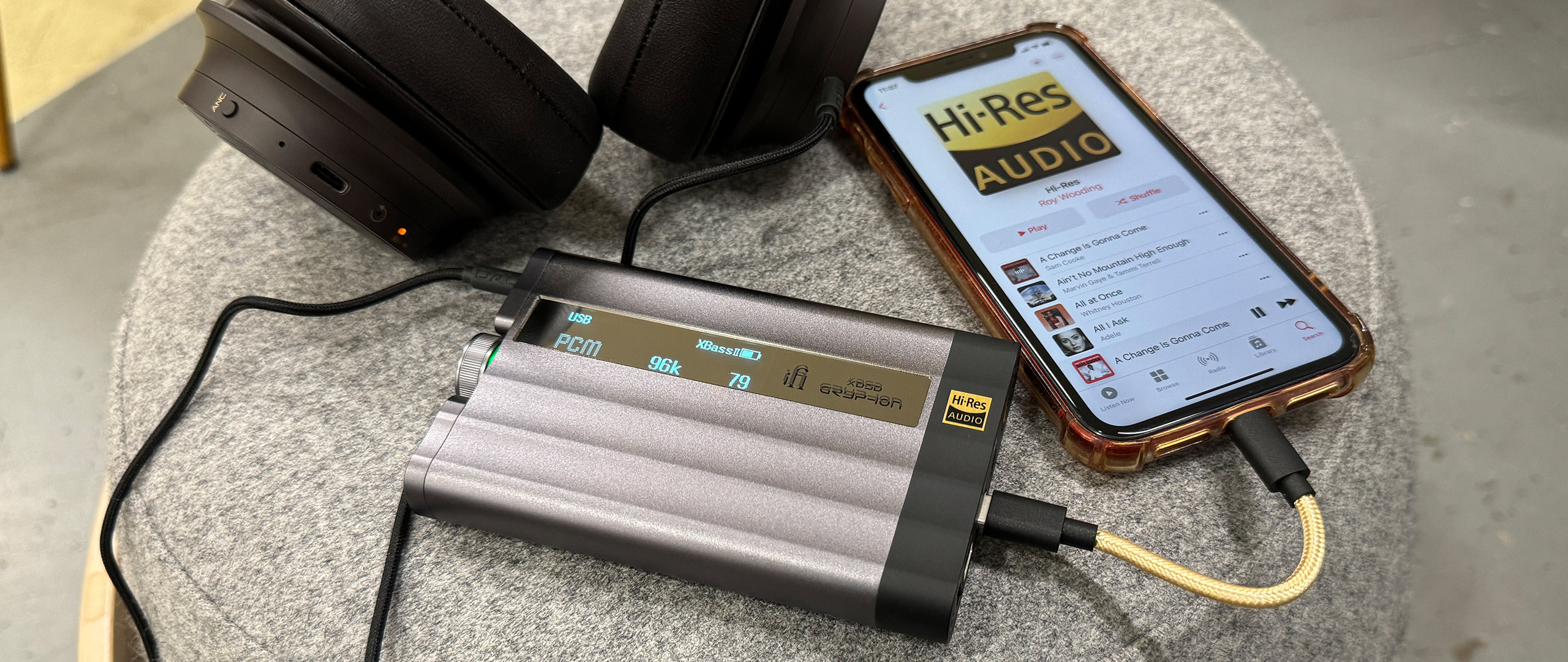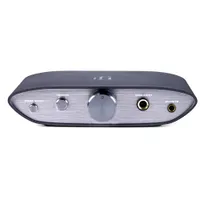TechRadar Verdict
You can get a big helping of this DAC and headphone amp's excellent performance from some of iFi’s less expensive models, but if the wireless functionality is especially appealing – and you can afford the ever-increasing asking price – the xDSD Gryphon is a brilliant option.
Pros
- +
Eloquent, informative and entertaining sound
- +
Thoroughly specified and then some
- +
Appropriately well made and finished
Cons
- -
Interface is not exactly intuitive
- -
Needs decent headphones
- -
Doesn’t really look like the money’s worth
Why you can trust TechRadar
iFi xDSD Gryphon: Two-minute review
The iFi xDSD Gryphon represents a new area of flexibility for the company. iFi is one of the front-runners where audio products like this are concerned and has been for some time. This xDSD Gryphon wants to widen the operability and relevance of its DAC and headphone amp range by offering wireless, as well as wired, connectivity in a package small and light enough to be considered portable. And it’s only gone and pulled it off. The xDSD Gryphon ain’t cheap, but the way it performs justifies the outlay all day long.
Huge flexibility where connectivity and digital audio content is concerned, a completely confident and convincing sonic attitude, and a user interface that only just stops short of ‘impenetrable’ are what makes this iFi, the product it is. If you want something that’s capable of doing the audio business whether at home or in the wild, it’s almost a no-brainer.
‘Almost’ because it’s not without competition from the best portable DACs on the market. A lot of it is from in-house, admittedly – but the xDSD Gryphon is going up against the Chord Electronics Mojo 2, which is a massively capable device in its own right. Hear them both, and then make your mind up.
iFi xDSD Gryphon review: Price and release date
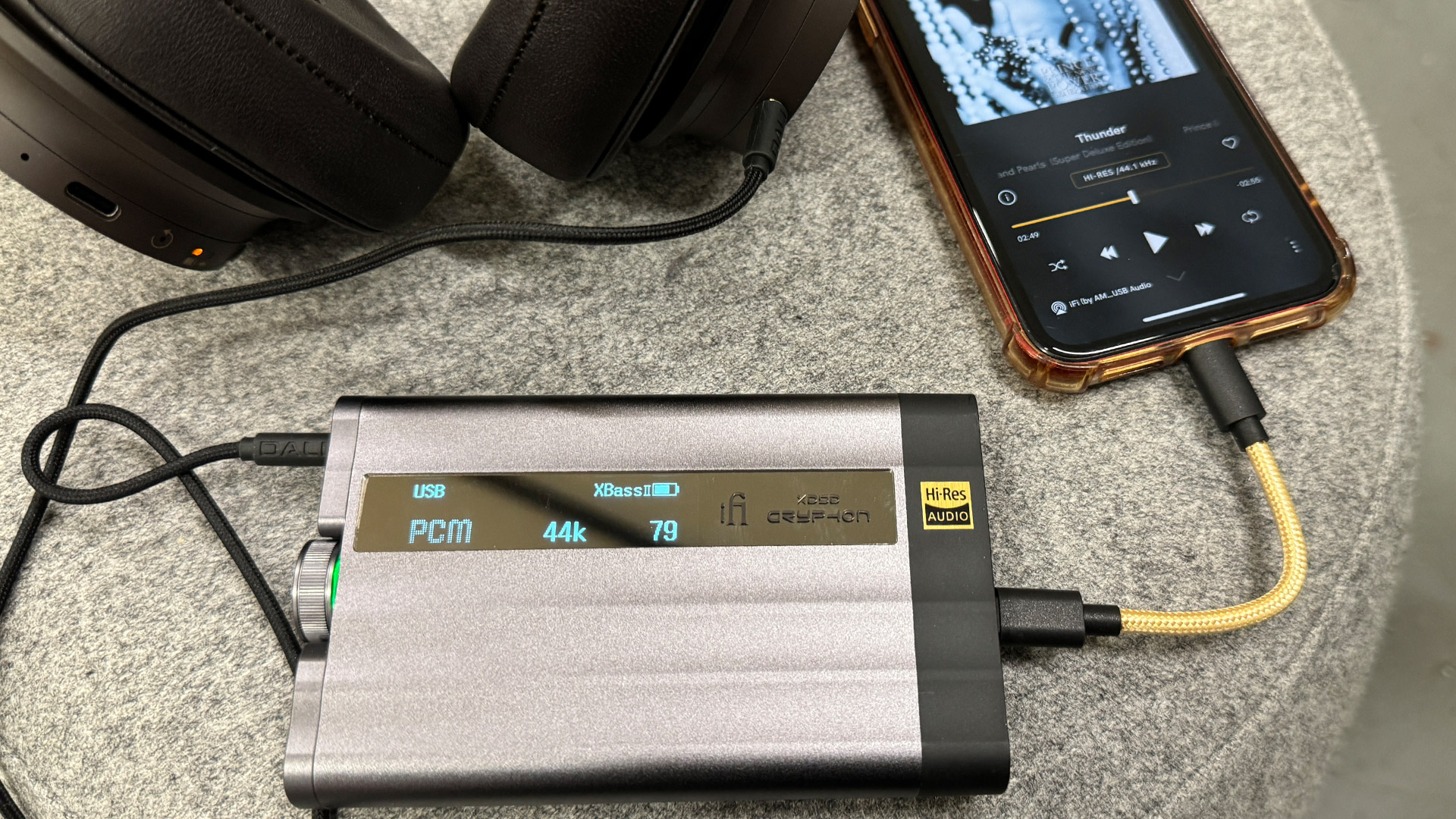
- Release date: December 2021
- Price: $599 / £599 / AU$899
The iFi xDSD Gryphon went on sale a couple of years ago, and in that time its reputation has grown in line with its asking price. As of the time of writing, it’ll set you back $599 / £599 / AU$899, which puts it up against some very well-regarded alternatives from companies as credible as Astell & Kern, Audiolab and Chord Electronics.
iFi xDSD Gryphon review: Features
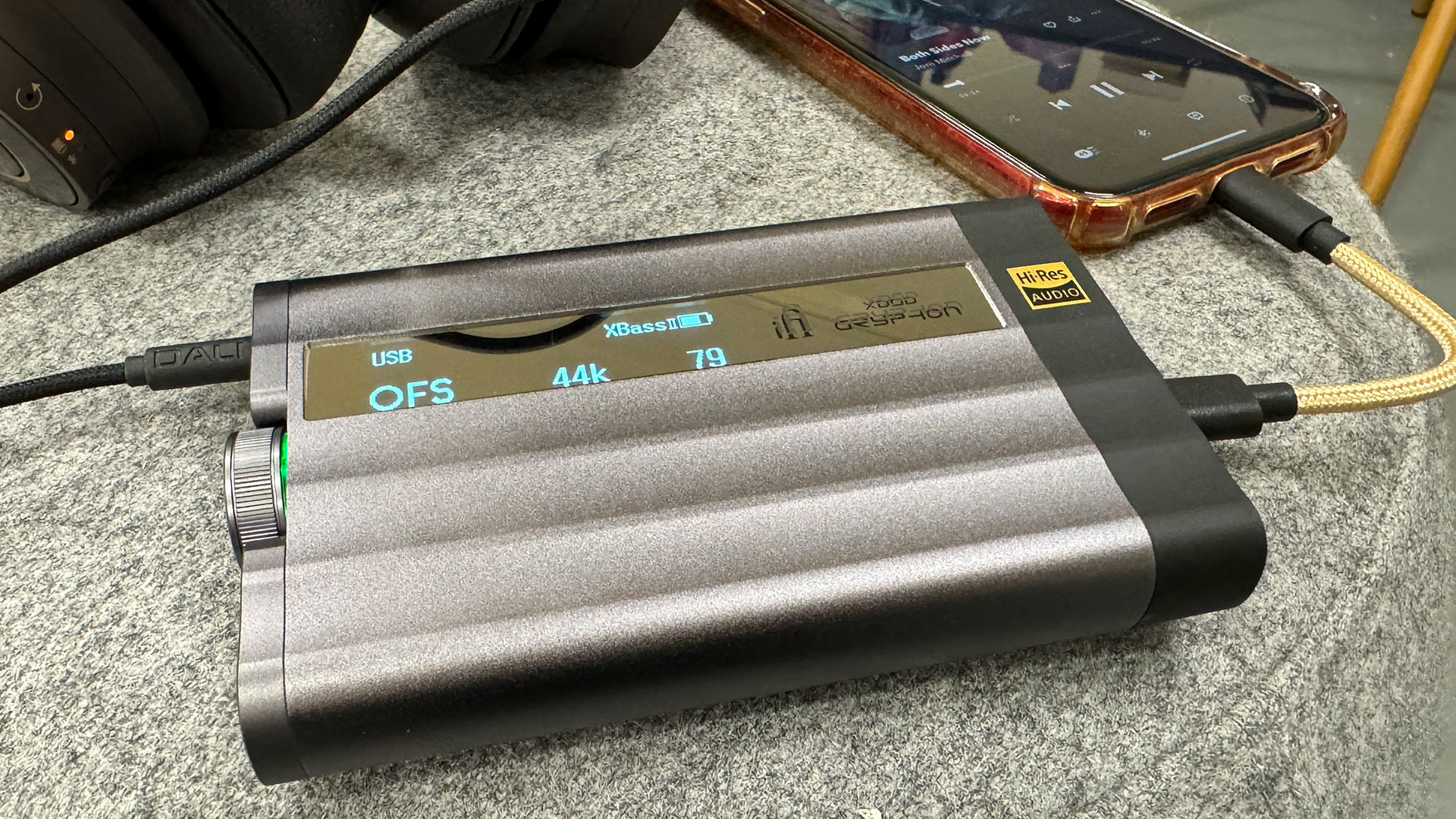
- Burr-Brown DAC
- Extensive compatibility
- Wired and wireless connectivity
iFi is not messing around where the feature-set of the xDSD Gryphon is concerned. The serious business is taken care of by a Burr-Brown chipset with enormous headroom and compatibility with a huge number of different digital audio file types. Use the USB-C input and it can handle PCM files up to 32bit/768kHz, DSD512 and DXD768 – and it can fully unpack MQA files too. The digital coaxial input is good up to 24bit/192kHz.
Regardless of the type or size of the file you’re interested in, though, you have plenty of options as to how to best deliver it to your headphones via its balanced 4.4mm or unbalanced 3.5mm analogue outputs.. Its ‘Xspace’ setting, for instance, strives to give the biggest soundstage possible. ‘XbassII’, I hardly need say, increases low-frequency presence and substance – and can be further assisted by a physical ‘bass and/or presence’ switch on the chassis. Content delivered digitally can also be breathed on by one of three digital filters: ‘standard’, ‘bit-perfect’ and ‘GTO’ (which stands for ‘Gibbs Transient Optimised’). The xDSD Gryphon can also be adjusted to best respond to the sort of headphones you’re using – high-sensitivity in-ear monitors, for example, can sometimes introduce hiss, so there’s an ‘IEmatch’ switch on the bottom of the chassis to help deal with that.
Wireless connectivity is handled by Bluetooth 5.1, and there’s codec compatibility from SBC and AAC to aptX (HD, Adaptive and Low Latency), HWA and LDAC. So you should be able to find something to best suit your needs. All the most significant (and noisiest) circuitry – amplification, Bluetooth and digital-to-analogue conversion – is kept isolated in order to minimise cross-talk and other sonic gremlins.
Sign up for breaking news, reviews, opinion, top tech deals, and more.
Power comes from a battery, of course – it’s a portable device, after all, and anyway it’s a cleaner and more efficient way to drive electrical equipment than noisy, dirty old mains power. The iFi has a 3600mAH lithium-ion battery that’s good for around eight hours before it needs recharging. From ‘flat’ to ‘full’ should take a couple of hours.
Peripheral features extend to a quite generous selection of high-quality (although admittedly quite short) connecting cables. If your needs aren’t met by USB-C / USB-C, USB-C / Lightning or USB-C / USB-A cables, then what exactly are you attempting to attach?
Features score: 5 / 5
iFi xDSD Gryphon review: Design
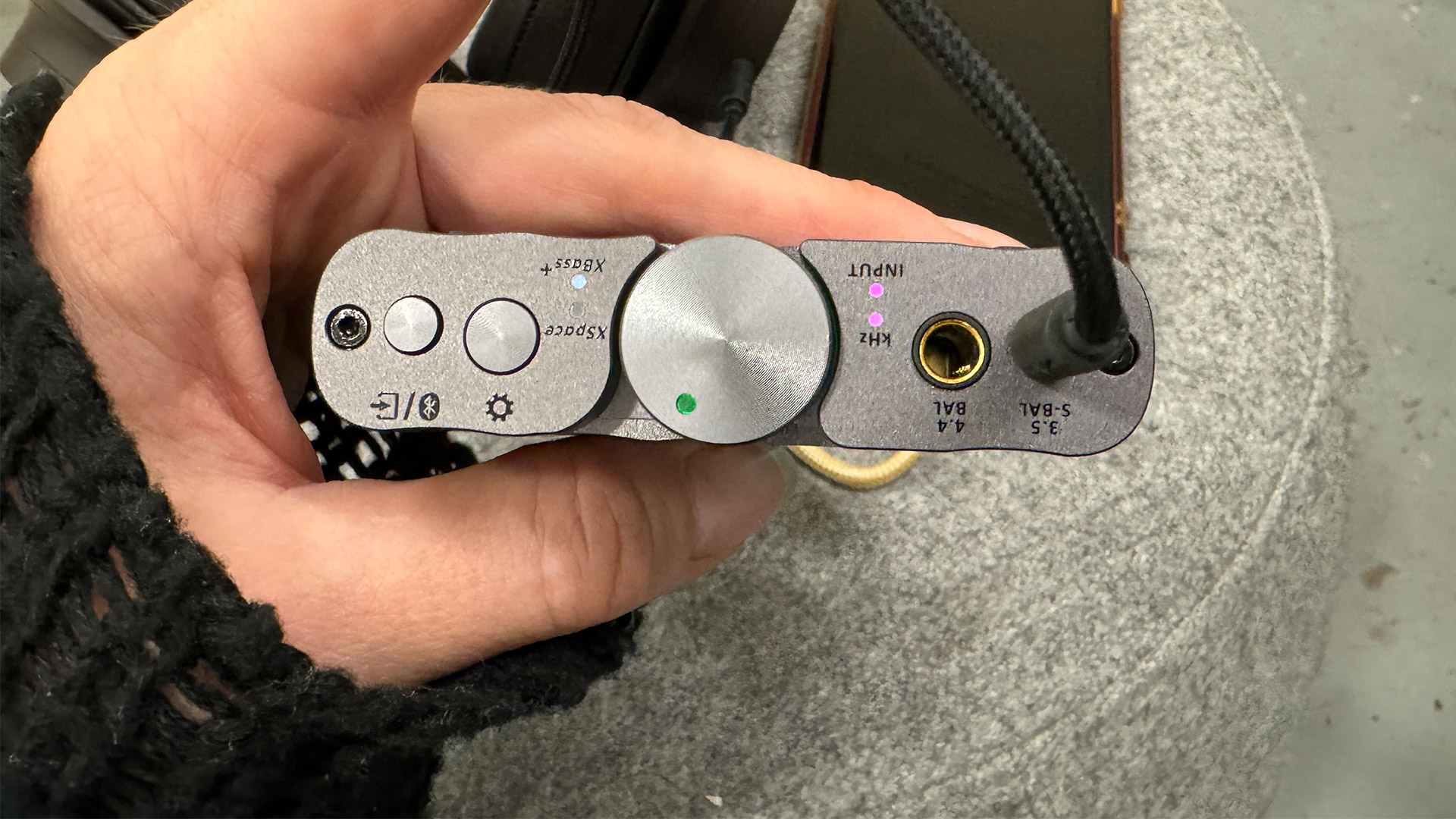
- 19 x 75 x 123mm (HxWxD)
- 215g
- Unhelpful user interface
This isn’t the first iFi product with a strong suggestion of the hip flask about it, and I strongly doubt it will be the last. At 19 x 75 x 123mm (HxWxD) its proportions are most definitely hip-flask-y, and it’s halfway between being truly pocket-sized and more suitable for desktop use.
If you do decide to take it out and about, though, its 215g weight is no kind of burden. A lot of that is down to its aluminium construction – its ridged and contoured design is quite interesting and tactile – and is broken only by the little mirrored strip on the top surface. There’s a crisp, bright white OLED display beneath it, which makes it easy to understand what the xDSD Gryphon is up to.
Getting it to the stage where it’s doing what you want it to is more trouble than it really should be, mind you. iFi has plenty of previous where unintelligible user interfaces are concerned, and the Gryphon is just the latest example of the company’s commitment to end-user confusion.
A push/turn control in the centre of the fascia takes care of volume, power and menu navigation. Nearby there’s a ‘settings’ button - it turns ‘Xspace’ and ‘Xbass II’ on or off if you use quick presses, while a longer press summons the on-screen menu. Here’s where you can select your preferred digital filter, set a maximum volume level and adjust screen brightness. An adjacent button handles input selection and Bluetooth pairing. There are also those balanced 4.4mm and unbalanced 3.5mm headphone outputs on the fascia, as well as five vanishingly small LEDs. One of them is embedded into the push/turn dial, and shines in one of five different colours (to indicate volume level) or flashes (indicating the Gryphon is muted). One reveals whether or not ‘Xbass II” and/or ‘Xspace’ is switched on. One reveals the input that’s in use (and so can shine in one of four different colours), and one reveals the audio format of the digital file currently on board (so shines in one of seven different colours, two of which are so similar as to be indistinguishable). All clear? Of course it bloody isn’t.
Meanwhile, the rear panel features two USB-C sockets (one for charging and one for data input), balanced and unbalanced analogue inputs and a 3.5mm digital coaxial input. There’s also the three-stage switch to select the ‘Xbass II’ tone (‘bass’, ‘presence’ or – hey! – ‘bass and presence’). It’s small, but it’s not as small as the switch on the bottom that controls the ‘IEmatch’ circuitry.
Design score: 3.5 / 5
iFi xDSD Gryphon review: Sound quality
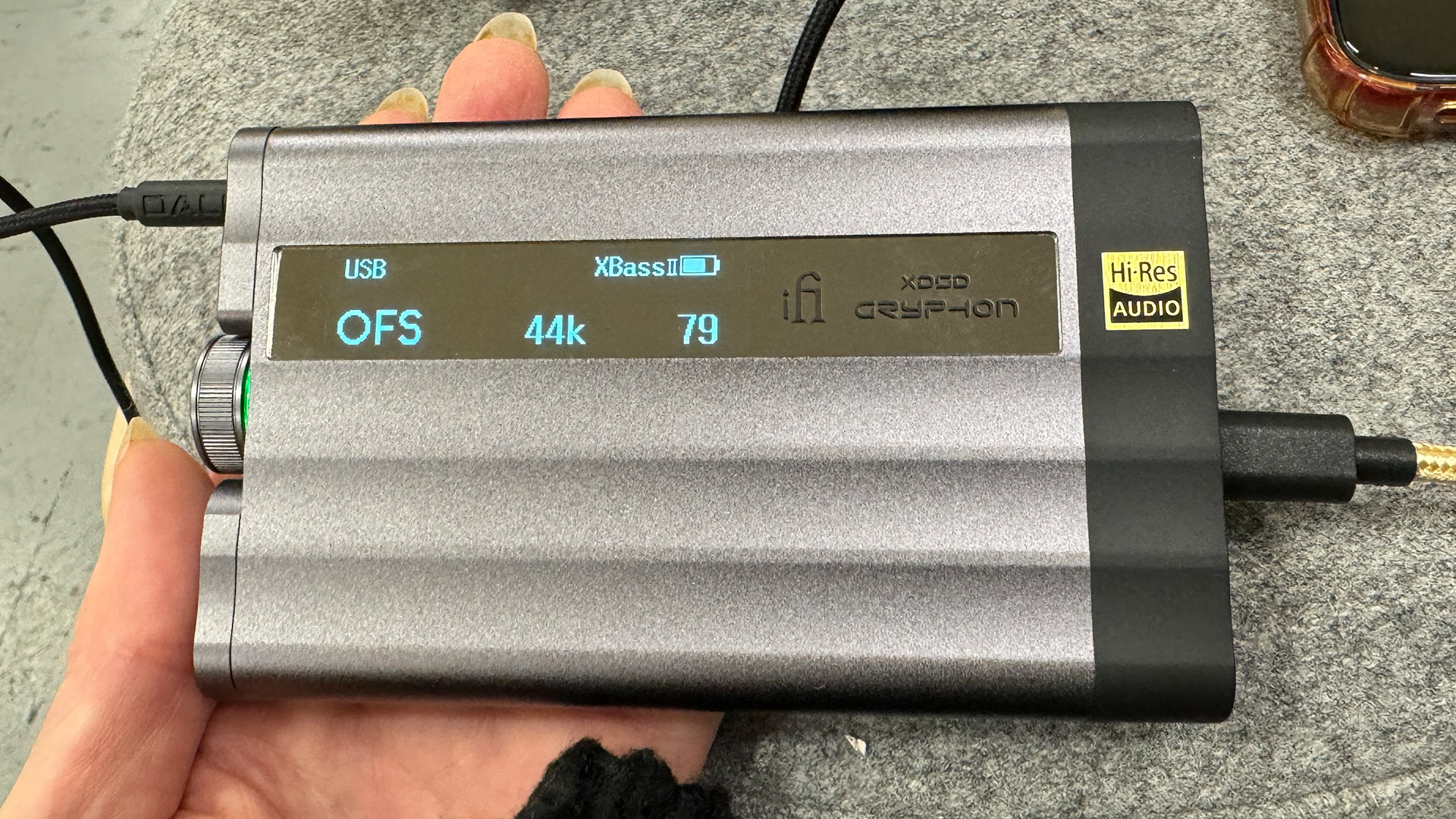
- Fast, detailed and articulate sound
- Dynamic and precise in equal measure
- Not impressed by inferior headphones
It makes sense to start listening to the iFi xDSD Gryphon in its most ‘pure’ state, which means filters set to ‘min’ and with ‘Xbass II’ and ‘Xspace’ switched off. Heard this way, and with content ranging from a 256kbps MP3 file of Eartheater’s Pure Smile Snake Venom to a DSD64 file of Stevie Wonder’s Pastime Paradise incoming from an Apple MacBook Pro via USB-C, the iFi is an uncomplicated, satisfying and thoroughly entertaining listen.
Its fundamental character is one of energy and speed. It creates proper momentum at the bottom of the frequency range without sacrificing any substance or extension. It powers through bass information with pace and precision, controlling low-frequency information with absolute authority – so the low end stays in its lane, underpinning everything going on above.
It’s similarly confident and accomplished at the opposite end of the scale, too. Treble sounds have brilliance and bite, but there’s no suggestion of edginess or splashiness, even if you’re listening at volume – and the Gryphon is most certainly capable of summoning significant volume. What you get at the top end is enough substance to counteract the shine, and – just as with the rest of the frequency range, impressively high levels of detail retrieval.
In between, the midrange is handled with complete assurance. Vocalists as idiosyncratic as the two mentioned above are given complete expression, their character and attitude and emotional state made absolutely plain. There’s real articulacy to the way the iFi deals with singers of all levels of competence, and as a result they communicate in the most direct and positive fashion.
The frequency range is properly integrated, and with its settings left well alone the Gryphon enjoys a nicely neutral and unshowy tonal character. It’s adept at creating a sensation of singularity and ‘performance’ to a recording, even if the recording itself isn’t the result of a group of musicians all playing in the same room at the same time. Dynamic range is considerable, so both harmonic variances and big changes in intensity or attack are tracked without apparent effort. And the soundstage it’s able to create inside your headphones is spacious, organised and utterly believable.
Fiddling with filters and what-have-you can result in small differences around the edges of the DAC’s overall performance, but in truth its fundamental characteristics don’t change all that much. And this is true regardless of which of the wired or wireless inputs you use - although naturally the quality of the wireless source (and its codec compatibility) has an effect on the final sound. Of more concern to the Gryphon, it seems, is the quality of the headphones you attach to it – it can happily drive even uncooperative headphones, but it gets a bit sniffy about less capable pairs and isn’t about to disguise that fact.
Sound quality score: 5 / 5
iFi xDSD Gryphon review: Value
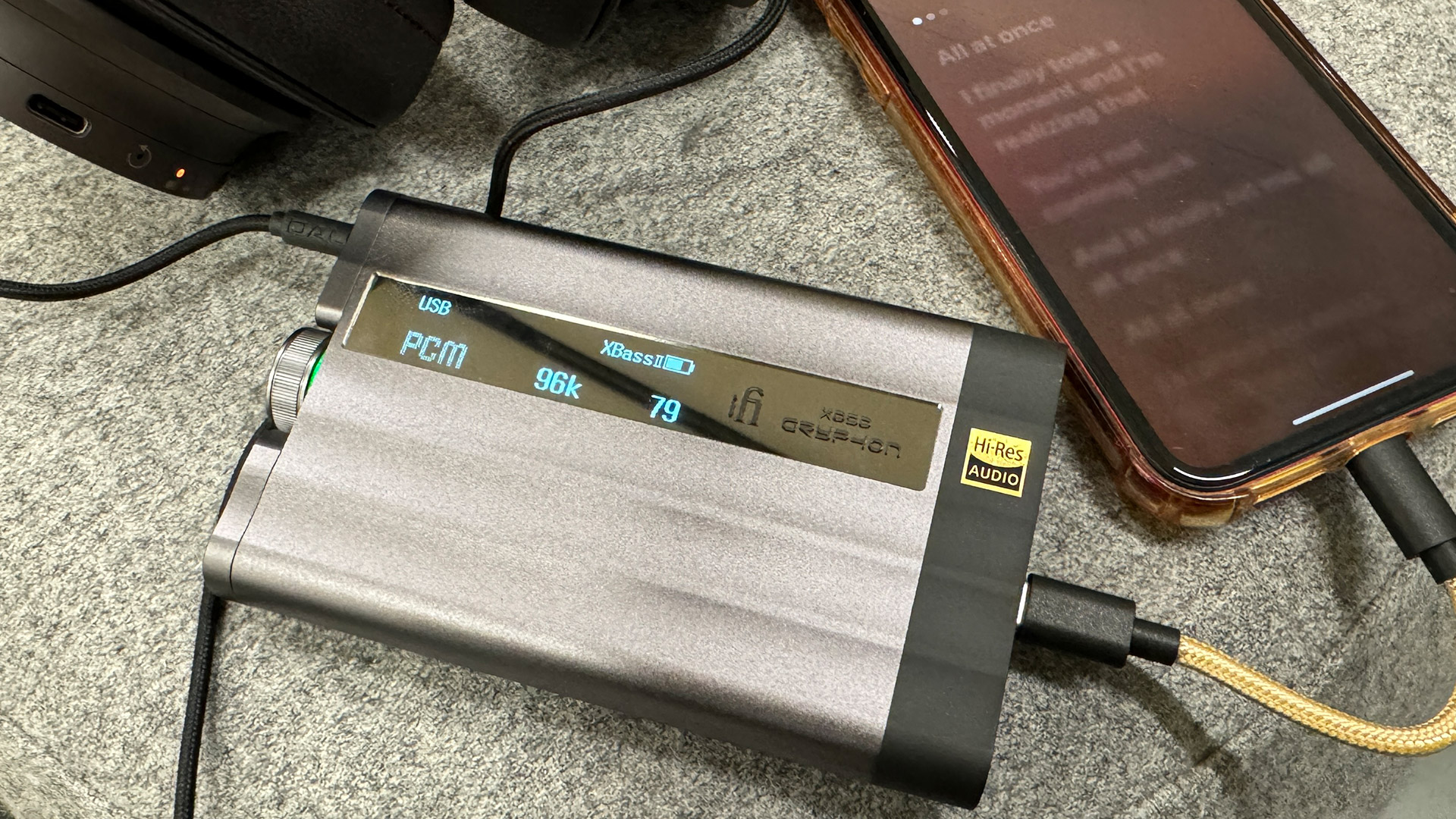
- Getting more expensive rather than more affordable
- Performance to back up the asking price…
- …but not so much the appearance
Unlike plenty of rival products, the price of the iFi xDSD Gryphon has gone up, rather than down, in the time it’s been on sale. This suggests that it’s been a roaring success, sure – but it also makes it slightly less compelling than previously. That the sound it makes is worth the money is not up for question, but if you judge as much by appearances as by performance you might end up wondering what all that money has bought you…
Value score: 4 / 5
Should you buy iFi xDSD Gryphon?
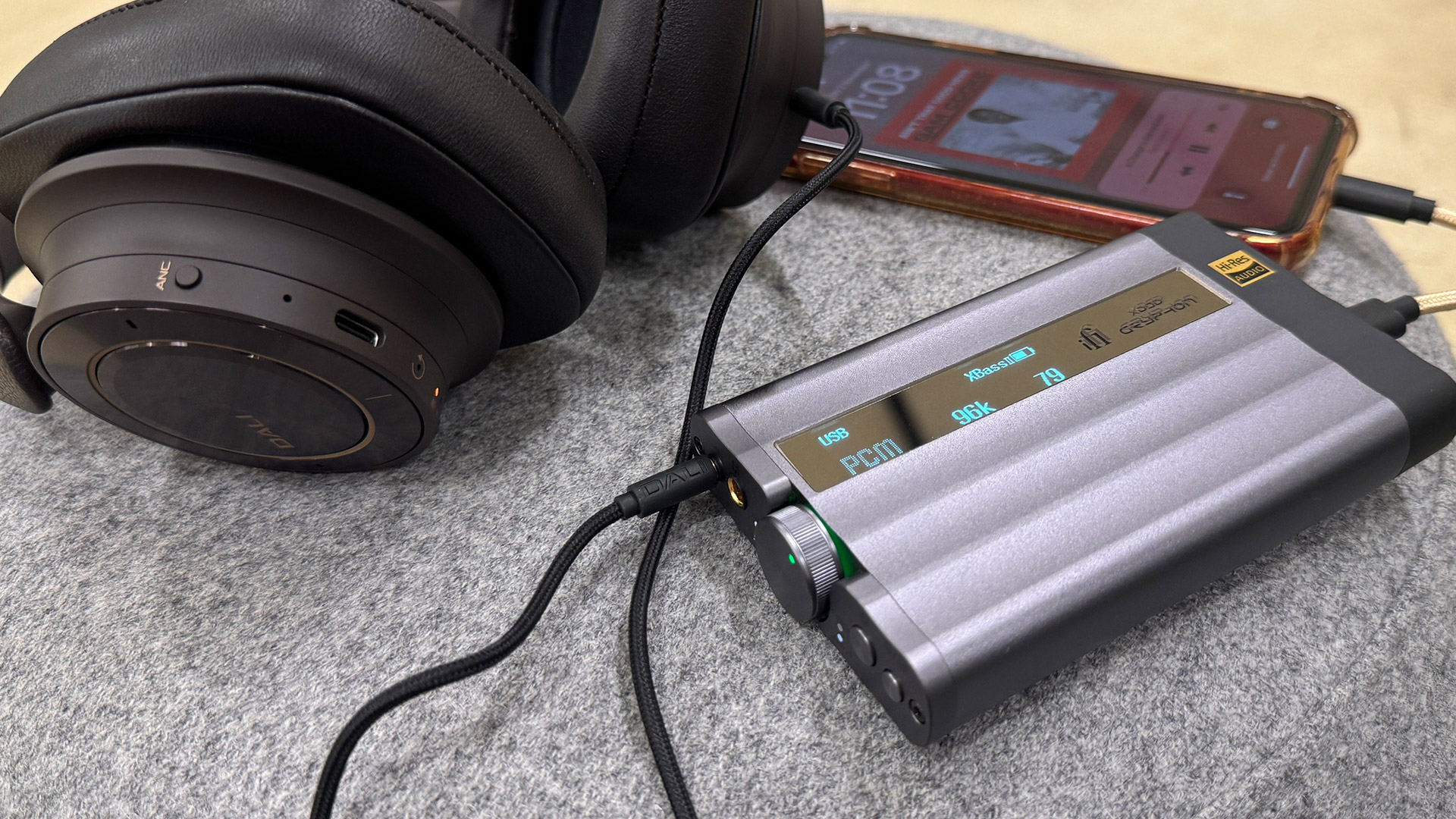
Buy it if...
You want to cover desktop and portable listening
The xDSD is specified to cover all eventualities – and is just about small enough to count as ‘portable’.
You have appropriate headphones
It’s your choice, of course – but the Gryphon won’t thank you for pairing it with headphones it feels are beneath it.
Your digital audio files are of many types
‘Extensive’ is too weak a word to describe the sort of file compatibility the iFi has – there’s no chance it can’t deal with what you give it.
Don't buy it if...
You want to see, and hear, where your money has gone
There’s nothing wrong with the way it’s built or finished, but the look of the xDSD doesn’t really shout ‘premium!’
You don’t have total recall
The user interface is, frankly, a nightmare – and if you can’t remember the meaning of little dots of colour, you’re done for.
You spend days away from mains power
Eight hours of battery life ain’t bad – but it means the Gryphon isn’t, in the final analysis, as portable as you might require.
iFi xDSD Gryphon review: Also consider
Chord Electronics Mojo 2
A bit big and chunky to be portable, no wireless connectivity, and an interface that’s not so much better as differently rubbish – but the Mojo 2 most definitely has it where it counts.
Read our full Chord Electronics Mojo 2 review
iFi Zen DAC
If ‘desktop’ is what you want and ‘portable’ doesn’t really come into it, you can get a big helping of the iFi sound for quite a lot less money.
Read our full iFi Zen DAC review
How I tested the iFi xDSD Gryphon
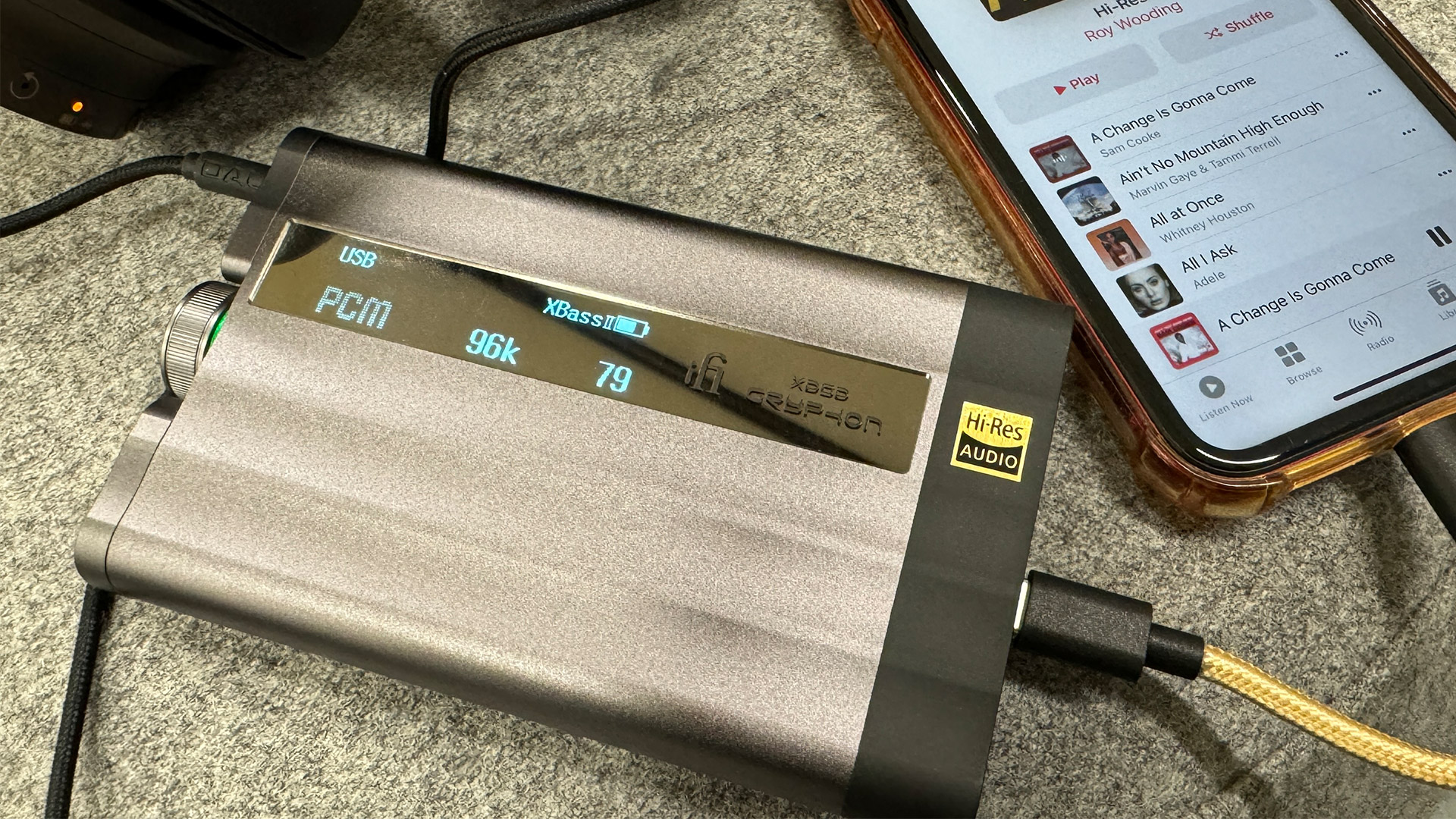
- Tested indoors and out
- Tested with numerous file types and sizes
- Tested with a number of different pairs of headphones
Really, that’s the whole story. I used the iFi xDSD Gryphon as a desktop DAC and headphone amp connected to a laptop, and I used it wirelessly when out and about connected to a smartphone.
I listened to a huge variety of file types and sizes, I used a number of different headphones, and I listened to lots of different types of music. I investigated its various options where filters and what-have-you are concerned, and I listened to some competing products too.
First reviewed in November 2023

Simon Lucas is a senior editorial professional with deep experience of print/digital publishing and the consumer electronics landscape. Based in Brighton, Simon worked at TechRadar's sister site What HiFi? for a number of years, as both a features editor and a digital editor, before embarking on a career in freelance consultancy, content creation, and journalism for some of the biggest brands and publications in the world.
With enormous expertise in all things home entertainment, Simon reviews everything from turntables to soundbars for TechRadar, and also likes to dip his toes into longform features and buying guides. His bylines include GQ, The Guardian, Hi-Fi+, Metro, The Observer, Pocket Lint, Shortlist, Stuff T3, Tom's Guide, Trusted Reviews, and more.
